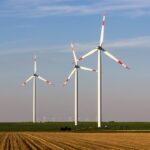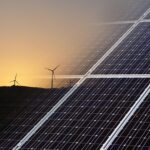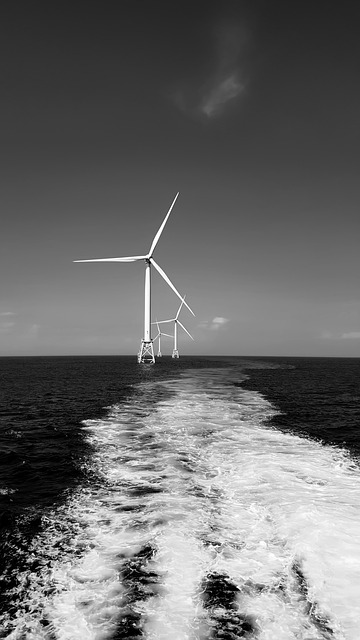And Beyond: Navigating the Green Energy Landscape
The shift towards green energy is not merely a trend; it is a necessity driven by climate change, resource depletion, and the urgent need for sustainable solutions. As the world embraces renewable energy sources, global economies are being transformed, lifestyles are shifting, and new technologies are emerging. This article delves deep into the green energy landscape, exploring current developments, innovations, challenges, and the path ahead.
The Urgency of Green Energy
Climate change is perhaps the greatest challenge facing humanity today. The increasing frequency of extreme weather events, rising sea levels, and unpredictable climate patterns are compelling reasons to pivot away from fossil fuels. The burning of coal, oil, and natural gas contributes significantly to greenhouse gas emissions, which trap heat in the atmosphere. Transitioning to renewable energy such as solar, wind, and hydropower is essential to curtail these emissions and stabilize our climate.
Global Energy Consumption Trends
As global energy consumption continues to rise, the need for renewable sources becomes even more apparent. According to the International Energy Agency (IEA), total global primary energy demand is expected to increase significantly in the coming decades. Fossil fuels currently dominate the energy mix, but a gradual shift is occurring as countries recognize the need for cleaner energy sources.
Investment in Renewable Energy
Renewable energy investments have witnessed robust growth. In 2020, global investment in renewable energy technologies reached approximately $300 billion. This includes advancements in solar panels, wind turbines, and energy storage solutions. Governments and corporations alike are realizing the long-term benefits of sustainability, aiding the transition to cleaner energy systems.
Understanding Renewable Energy Technologies
Renewable energy technologies are diverse and continually developing. Each of them plays a critical role in the green energy landscape, offering unique advantages and challenges.
Solar Energy
Solar energy harnesses sunlight to generate electricity through photovoltaics (PV) or concentrated solar power (CSP). Solar panels are becoming a familiar sight on rooftops, with residential installations growing rapidly. Innovations such as bifacial solar panels, which capture sunlight on both sides, are increasing efficiency and reducing costs. The potential for solar energy is immense, given that the sun emits more energy in one hour than the entire world uses in a year.
Wind Energy
Wind energy relies on wind turbines to convert kinetic energy into electricity. Onshore and offshore wind farms are being built at an unprecedented pace. Technological advancements are leading to larger turbines with greater efficiency and energy output. Offshore wind energy, in particular, has been recognized for its potential, with vast wind resources available due to the extensive ocean areas.
Hydropower
Hydropower is one of the oldest and most reliable forms of renewable energy, using water flow to generate electricity. Although hydropower has a smaller carbon footprint compared to fossil fuels, it can have significant impacts on local ecosystems. New innovations such as small-scale hydropower and run-of-the-river systems aim to mitigate these effects while providing energy.
Geothermal Energy
Geothermal energy taps into the Earth’s internal heat to produce energy. This source is particularly advantageous in regions with volcanic activity, where hot steam and water can be accessed to drive turbines. As technology improves, geothermal energy may prove to be a more widespread option, contributing to a cleaner energy portfolio.
Bioenergy
Bioenergy derives from organic materials such as plants and animal waste, converting them into electricity, heat, or biofuels. It plays a crucial role in waste management and provides a renewable alternative to fossil fuels. However, careful management of bioenergy resources is necessary to avoid competition with food crops and negative environmental impacts.
Challenges in the Transition
While the benefits of green energy are clear, the transition is fraught with challenges.
Infrastructure and Technology
Modernizing grid infrastructure and increasing storage capacity are vital for accommodating renewable energy sources. Solar and wind energy are intermittent, requiring efficient energy storage solutions to ensure a constant energy supply. Technologies like battery storage, pumped hydro storage, and hydrogen fuel cells are essential for stabilizing the grid.
Policy and Regulation
Government policies play a crucial role in the success of green energy initiatives. Inconsistent regulations, subsidies for fossil fuels, and the lack of long-term policy frameworks can hinder investments in renewable energy. Transitioning to sustainable practices requires strong political will and a comprehensive framework that promotes clean energy solutions.
Public Awareness and Acceptance
Increasing public awareness and acceptance of renewable energy is key to driving change. Misconceptions about the feasibility, cost, and reliability of green technologies can stymie progress. Educational campaigns that demonstrate the benefits of renewable energy and showcase successful projects can help change perceptions.
The Role of Innovation
Innovation is at the heart of the green energy transition, paving the way for new solutions that enhance efficiency and reduce costs.
Smart Grids
Smart grid technology integrates digital communications and data analytics into the energy system, enhancing the efficiency and reliability of energy distribution. By enabling real-time monitoring and optimization of energy consumption, smart grids facilitate better integration of renewable energy sources, demand response, and energy management systems.
Energy Storage Solutions
Innovations in energy storage, especially batteries, are crucial for addressing the intermittency of renewable energy. Emerging technologies like lithium-silicon batteries, flow batteries, and even organic-based batteries promise improved performance and sustainability.
Carbon Capture and Utilization (CCU)
While efforts focus on reducing reliance on fossil fuels, technologies like carbon capture and utilization offer pathways to mitigate emissions from existing sources. By capturing CO2 emissions and repurposing them for commercial use, we can bridge the gap while transitioning to a cleaner energy future.
The Future of Green Energy
The future of green energy is bright but requires collaborations among governments, businesses, and citizens. Investment in education, infrastructure, and innovative technologies will be paramount. As the world continues to strive for sustainable development, the following trends are likely to shape the green energy landscape.
Decentralization of Energy Production
Proliferation of distributed energy resources, such as rooftop solar systems and local energy storage, moves away from centralized power generation. Decentralization allows communities to take control of their energy production, reduces transmission losses, and enhances energy resilience.
Electrification of Transportation
The electrification of the transport sector, driven by electric vehicles (EVs), is crucial for reducing greenhouse gas emissions. As battery technology improves and EV adoption rises, the demand for clean energy will also increase, creating a positive feedback loop for renewable energy development.
Sustainable Development Goals (SDGs)
The United Nations’ Sustainable Development Goals (SDGs) emphasize the importance of affordable and clean energy. Achieving these goals will require collaborative international efforts. Many countries are beginning to integrate renewable energy into their national development strategies, recognizing its potential to drive economic growth and poverty reduction.
Conclusion
Navigating the green energy landscape requires addressing challenges, investing in innovation, and fostering collaboration among all stakeholders. The transition to a sustainable energy future presents opportunities for economic growth, environmental stewardship, and energy security. As we move forward, embracing renewable energy will not only help mitigate climate change but also build a more resilient and equitable world. The journey has only just begun, but with every step taken towards sustainability, we move closer to a brighter future filled with promise and potential.










